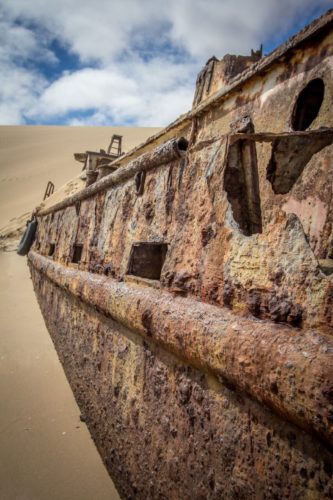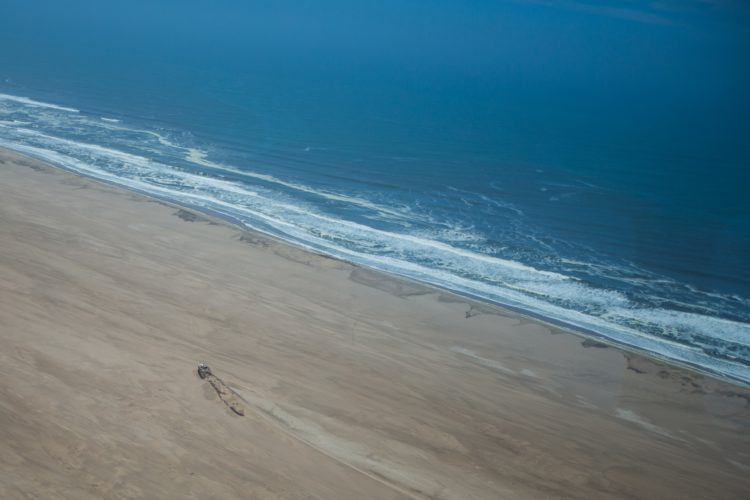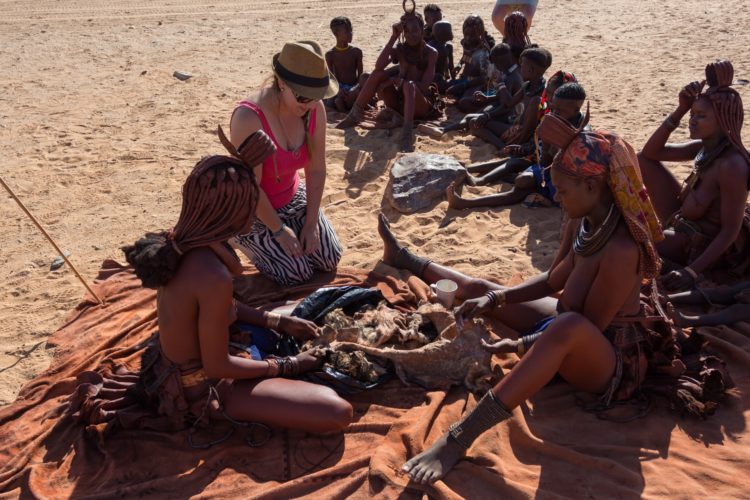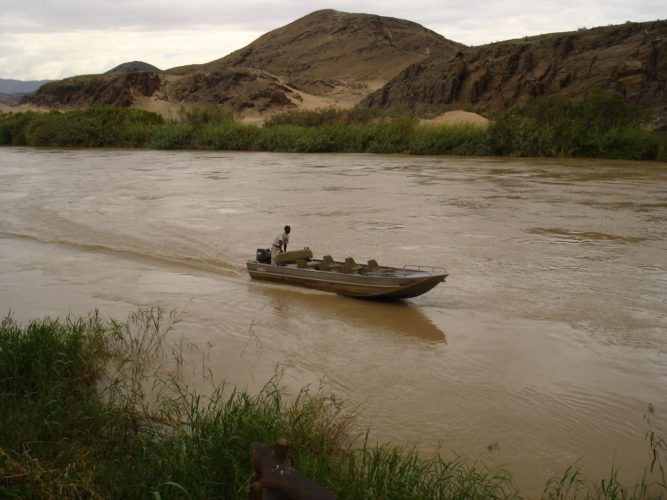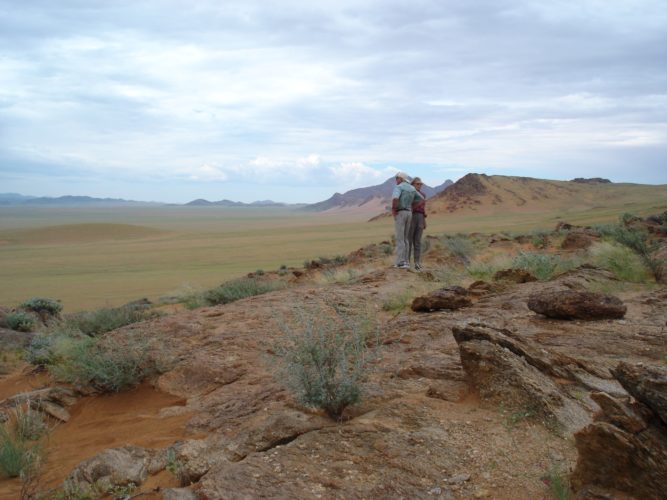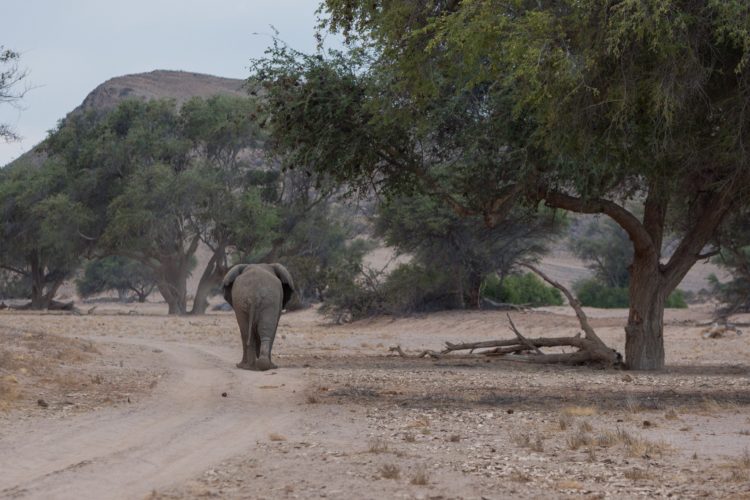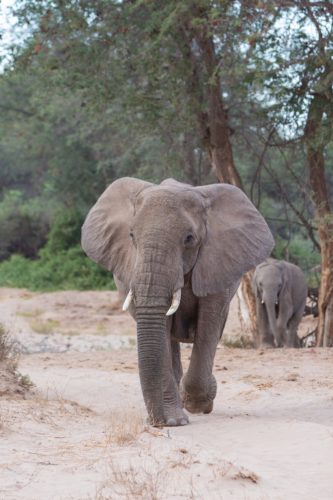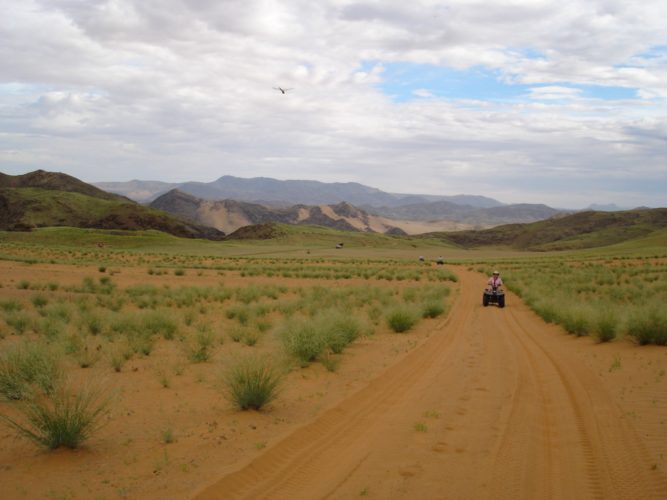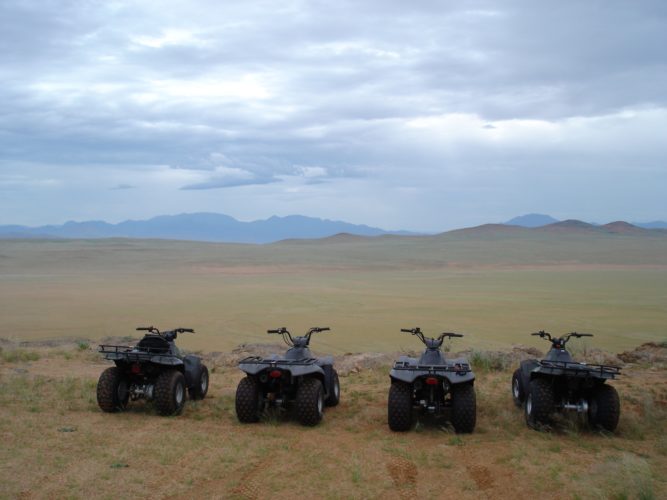Our Guide to
Skeleton Coast Namibia
The Skeleton Coast conjures up images of an eerie coastline shrouded in mist, beaches littered with bleached whalebones and rusted shipwrecks. It’s a haunting and evocative destination on the treacherous stretch of wild Atlantic coastline. The region stretches along one third of Namibia’s western coastline from southern Namibia all the way up to Angola.
Much of the Skeleton Coast is protected within an eponymous national park. Whilst the coastline is beautiful, its inland landscapes are truly spectacular and ever changing thanks to weather impact on geology. Still comparatively unknown to travellers, this region boasts sensationally dramatic scenery, small populations of wildlife and the Himba people.
The Skeleton Coast is home to only the most adaptable flora and fauna, among them desert dwelling elephants, black rhino, Cape fur seals, sea and shore birds including vast numbers of migrant waders, prolific fish species, rare reptiles and bizarre plants. More information on a Namibia safari here.
In the Skeleton Coast holiday list is a desolate coastline and endless and impressive dunes, Ugab rock formations, ancient bushman rock art, nomadic Himba people, Hartmann Valley and its pretty vistas, the living fossil tree called Welwitschia Mirabilis and the sandstone landscape of the Huab environment.
Wildlife is here, just harder to spot as it moves around seeking water and shelter from the elements. Elephant, zebra, oryx, springbox, ostrich, giraffe and even cheetah. Each animal is so well adapted to the desert conditions and that in itself is exciting to see and learn about on your Skeleton Coast holiday adventure.
Are you Skeleton Coast safari ready?
Let’s ChatThings to Do on the Skeleton Coast Namibia
The southern gateway to the coast is Swakopmund, a German settlement and just north is Henties Bay, popular among fishing enthusiasts. The Cape Cross Seal Reserve is further north, supporting a colony of around 200,000 seals. It’s very impressive if not pungent simply due to the vast number of seals. It is a historically significant site too because in 1486 the first European set foot on the coast here a “Portuguese navigator Diego Cao”. The Skeleton Coast National Park proper is a narrow tract of land 30″ 40 kilometres wide and 500 kilometres long, stretching between the Ugab River and the Kunene River. It extends 16,400 square kilometres and the special quality is certainly its remoteness.
This region boasts so many styles of experiences and the highlight is a flying safari along the Skeleton Coast with the Schoeman family who know this region intimately. The benefit of this trip is you get to fly low up the coast from Swakopmund, passing isolated fishing villages, rusty shipwrecks and endless dunes. Your eyes focus on the three different vistas the endless ocean, rolling beach and its vast dune-hugging desert. You land in remote areas, dine with nobody but the wildlife around and continue the journey each day to unfound paradises one cannot fathom. Camp is set up for you and simple, just how it should be in an area of such natural beauty. It’s all about ecological minimal impact. This style safari in Namibia focuses on the natural world in front of you rather than the extravagant trimmings of a luxury lodge.
A fly-in Skeleton Coast holiday sees you board a light aircraft bound for the region where you are dropped off and met by a guide from camp. The next few days you base at the luxury property and head out with experienced guides to explore and unearth the hidden gems of the Skeleton Coast.
Thrill seeking 4×4 drives is another style of safari you’ll experience in the Skeleton Coast and it’s not for the faint hearted. Heights are dizzying and the vehicles roar up and roll down. Fascinating is the purple sand of the area you can explore on foot. Garnets washed down a distant river before flushing out into the Atlantic. The water currents took them north before tides pushed them back to land and the wind picks them up and drops them in this one area. Garnets are now mere grains in the sand; only perfect jewels when spied through a magnifying glass.
Dunes are an integral part of the landscape here and you can explore on foot to feel the enormity and get close to the smaller desert wildlife. From one of the camps you can also visit a local Himba tribe who still live the traditional way of life.
The Skeleton Coast is one of the most treacherous coastlines in the world and this comes down to the strong crosscurrents, dense fogs caused by the ice cold fast flowing Benguela current and heavy swells. Add to this rocky reefs and sand dunes that stretch into the sea and it’s disaster for many ships. A visit to the Skeleton Coast is not complete without seeing some of the shipwrecks that date back to the early 1900s.
Accommodation in Skeleton Coast Namibia
With just a handful of luxury Namibia safari properties accessible by air, this area is for the adventure seekers with extra time and money available. Hoanib Skeleton Coast (pictured) is set close to tributaries with stunning views over dunes, plains and mountains.
Wildlife is desert adapted and diverse and you head out on 4×4, light aircraft adventures and nature walks. In the most remote, northern reach of the coast is Serra Cafema, a luxury Namibia lodge only accessible by light aircraft.
The emphasis here is on nature drives exploring the landscapes as you traverse valley sand dunes plus quad biking, walking safaris and cultural visits to the local Himba settlement.
Best Time to Visit the Skeleton Coast
The Skeleton Coast can be visited throughout the year and the ideal time is certainly the warmer months to avoid the rain and enjoy clear skies, so October to March. May to August offers a more moderate climate with foggy mornings and cool evenings.
Let’s Chat